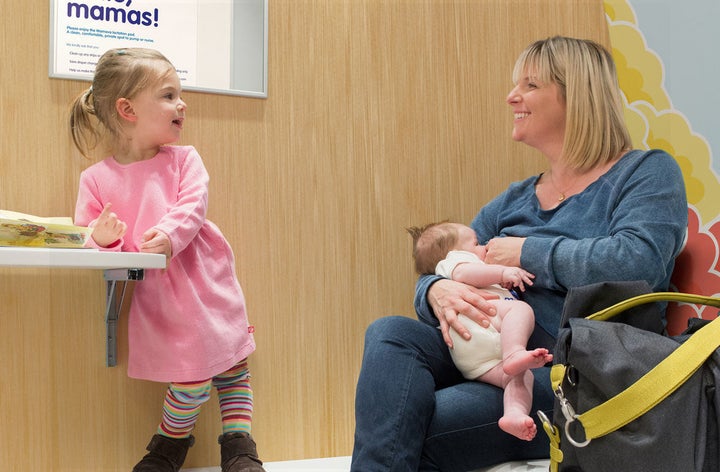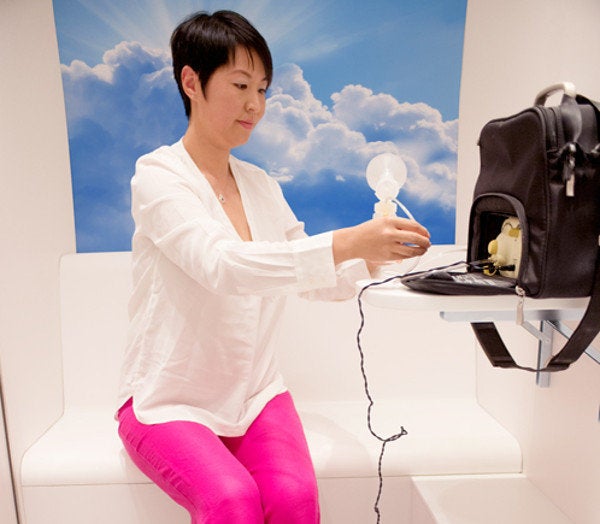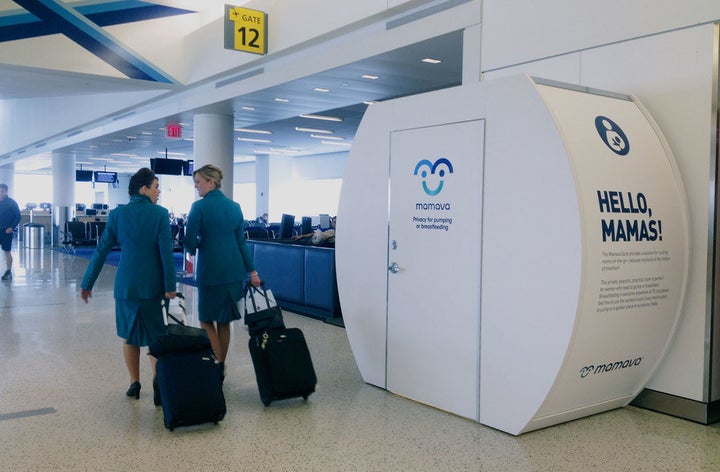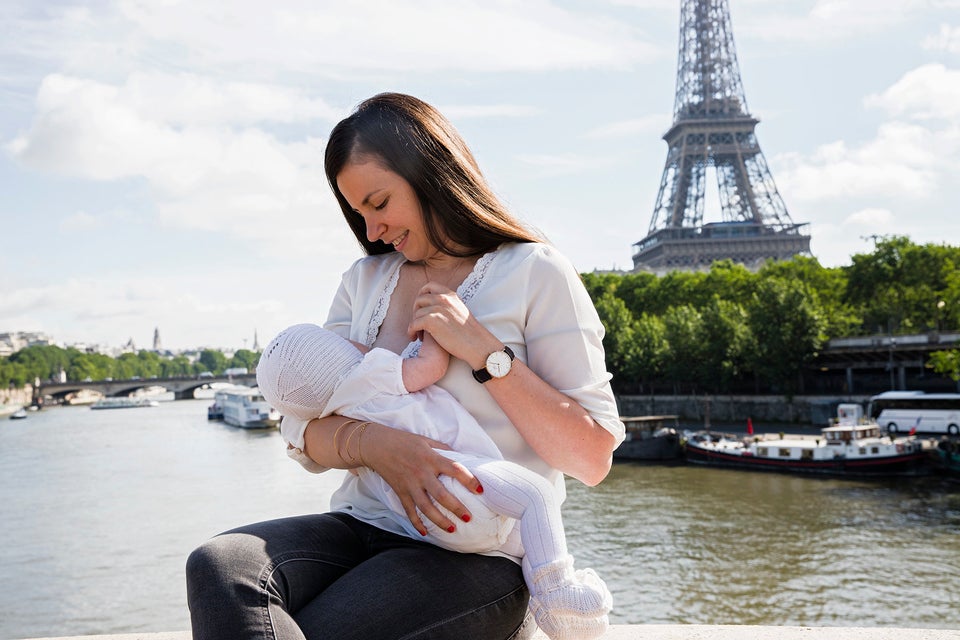Air travel can be a headache for anyone, and for breastfeeding mothers, flying presents a whole other set of challenges.
If you’re traveling with your baby, you’ll likely need to nurse at least every few hours, but many mothers struggle to find a clean, comfortable place to breastfeed. If you’re traveling without your baby, your pumping process will likely require precious time, energy and logistical planning. On top of that, you’ll need to familiarize yourself with the Transportation Security Administration’s guidelines and procedures when it comes to flying with breast milk.
Over the years, many breastfeeding mothers have shared their airport horror stories ― missing flights because of security hold-ups, being relegated to an airplane lavatory or airport pet relief area to pump, undergoing bomb squad treatment or having their breast milk confiscated and thrown out.
To explore some of the challenges breastfeeding mothers face and offer tips to help make the experience better, HuffPost spoke to Sascha Mayer, the CEO and a co-founder of Mamava ― a company that provides lactation suites and other resources for moms on the go.
Here’s what breastfeeding women should know about air travel.
Breast Milk Is Allowed Through Security
“A lot of moms don’t know their rights because the TSA guidelines are vague and confusing,” Mayer said. “The most important thing to know is that breast milk is allowed. Breast milk, formula and juice are all allowed through security in your carry-on bag.”
Breast milk is exempt from the 3.4-ounce maximum for carry-on liquids. Travelers just need to inform a TSA officer at the beginning of the screening process that they’re carrying breast milk and separate it from their other liquids.
It can be helpful to print out the TSA guidelines ahead of time to present to officers in case of any confusion or problem. Additionally, you can call the TSA Contact Center.

You Can Say No To X-Raying Or Opening Your Breast Milk
The TSA website states that it may be necessary to test liquids “for explosives or concealed prohibited items,” so officers may prompt you to open your container of breast milk or “have you transfer a small quantity of the liquid to a separate empty container or dispose of a small quantity, if feasible.”
But as Mayer noted, travelers do not have to waste their breast milk or expose it to possible contamination.
“If breast milk is frozen, a visual inspection is usually fine,” she said. “However, if it’s thawed, TSA agents may want to test it for explosives, but you have the right to say no. Screening procedures are increasingly noninvasive. You can ask the TSA agent to put on a fresh pair of gloves if they handle your bottles or bags of milk.”
According to the TSA, travelers can say if they do not want their breast milk to be X-rayed or opened ― though it seems that can make the process take more time. “Additional steps will be taken to clear the liquid and you or the traveling guardian will undergo additional screening procedures, to include a pat-down and screening of other carry-on property,” the guidelines state.
Mindful Packing Helps
“Pack your pump, breast milk and freezer packs together in one bag. There’s a lot of misinformation out there about whether or not breast pumps are considered medical devices and thus not counted as one of your carry-on bags,” said Mayer.
“According to the FDA a breast pump is a medical device, but because airlines still vary on whether or not they’ll count your pump bag as a carry-on, it’s best to check with your specific airline,” she added. Some airlines, like JetBlue and United, have guidelines stating that breast pumps are permitted in addition to the regular carry-on and personal item. Mayer recommended taking extra batteries and a hand pump in your purse.

Foreign Airports Have Different Guidelines
In 2015, Alyssa Milano complained on Twitter after security at London’s Heathrow Airport confiscated her pumped breast milk. Airports in other countries have different policies when it comes to breast milk, so it’s best to do a Google search or contact your airline’s customer service department to find out what those guidelines are.
Some Services Transport Your Breast Milk For You
If you prefer not to fly with your pumped breast milk, companies like Milk Stork and Milk Expressed can ship it to your preferred destination for you.
You Have The Right To Breastfeed Anywhere In Public
Although it seems women are routinely shamed and even asked to leave certain establishments for publicly nursing their babies, it’s important to know that women in the United States have the legal right to breastfeed in public.
That means you may nurse your baby at your gate, on your flight and anywhere else you’re allowed to be.
Many Airports Have Lactation Spaces For Mothers
There are nearly 100 Mamava lactation suites ― equipped with benches, a fold-down table, A/C and USB power outlets and space for luggage ― in 44 airports across North America.
“We fully support a mama’s right to nurse her baby whenever she wishes and wherever she’s comfortable,” Mayer said. “But we know there are times when you’re wrangling a fussy baby, corralling a toddler and schlepping luggage when having access to a private space can feel like a slice of heaven.”

Mamava’s mission is to provide “a private, clean and dignified place to nurse or pump,” she added. “And a bathroom is not a place to prepare a meal for your baby.”
Beyond the Mamava suites, many airports offer other lactation spaces ― usually referred to as mother’s rooms or nursing lounges.
There’s An App For That!
Mamava also offers a free app that helps parents locate Mamava pods and more than 2,000 other clean and comfortable locations the company has vetted for breastfeeding and pumping.
A similar app is Moms Pump Here. There are also websites that track nursing areas in airports.
Proposed Legislation Aims To Improve Air Travel For Nursing Moms
Sen. Tammy Duckworth’s Friendly Airports for Mothers Act would direct large and medium-size airports to provide private, nonbathroom lactation spaces in each terminal. These spaces would have to be accessible to people with disabilities, located past security and equipped with a place to sit, a table or other flat surface and an electrical outlet. Those in favor of the legislation can take action by encouraging their elected officials to support the bill, promoting it in their social networks and even sharing their own airport breastfeeding experiences.

